Features
This summer, 127 students from across the UK came to Oxford to participate in UNIQ+ - the university's flagship graduate access programme that provides students from underrepresented or disadvantaged backgrounds with the opportunity to experience life as a graduate research student. The 7-week programme sees students undertake a research project and attend training skills and information sessions, as well as meeting and working with Oxford researchers, academic staff, and graduate students.
Here we hear from UNIQ+ supervisor David Gavaghan, Professor of Computational Biology at Oxford, and his 2023 UNIQ+ interns, Talal and Kamil, to find out more about their experience of the programme.
Professor Gavaghan, can you tell us about your role at Oxford?
This is my 37th year at Oxford - I came in 1986. I came here for one year to do a master's degree and never quite escaped, although it’s quite a nice place to get stuck!
I particularly work with industry, so looking at how we can use computational biology to establish whether new drugs are likely to cause toxic side effects on the heart and the way that disease spreads, for instance during the Covid-19 pandemic. An academic project I have looks at whether we can engineer bacteria to produce hydrogen and oxygen from waste products which would help tackle climate change. A huge range of things, and what ties it all together is that the mathematics is pretty much identical for all of those things, surprisingly!
My main job these days is running the Doctoral Training Centre, which has four different programmes for DPhil students. We take around 100 students a year and we try and get them to work on problems in the life and natural sciences, with students coming from the complete range of science backgrounds.
How are you involved in UNIQ+?
I’m Chair of the Graduate Access Working Group at Oxford, which has been going for about four years now. One of its first initiatives was UNIQ+, to support underrepresented groups and socio-economically disadvantaged undergraduate students from the UK. This is our fourth iteration of the internship programme. We started with thirty-three students in 2019 and then Covid happened, so the second year was a scaled back digital programme and we had about 115 students. In 2021, we ran a mostly online internship programme, then in 2022 and 2023 we’ve been able to open the programme to 130 students.
You’ve also been supervising two UNIQ+ interns this summer. What have you been working on? 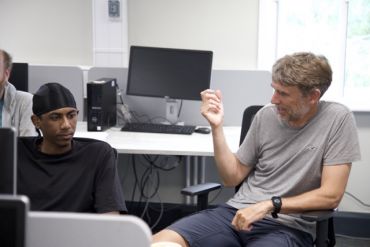 Professor Gavaghan and UNIQ+ 2023 intern Kamil
Professor Gavaghan and UNIQ+ 2023 intern Kamil
What do you enjoy most about being a supervisor?
Getting to interact with the students. They’re so enthusiastic, they’re enjoying being in Oxford, they’re working hard and clearly getting a lot out of it. The point about UNIQ+ is that students who are under-represented in graduate study at Oxford come here and discover that it’s just like any other university. It’s just a really good university and a great place to study. That’s the thing I like best about it. One of the goals is that everyone who has the potential to succeed here considers it as somewhere they might go.
Do participants tend to go on to graduate study?
It varies from year to year. It is certainly making them think hard about whether they want to do graduate study, and that’s one of the interesting things - if they’ve already got a job - whether they’ll come back later and do graduate study having done this. It might put it in their heads.
Before arriving in Oxford for UNIQ+ Kamil had been at UCL studying Computer Science, and Talal had been studying Discrete Mathematics (Maths and Computer Science) for his undergraduate degree at Warwick University.
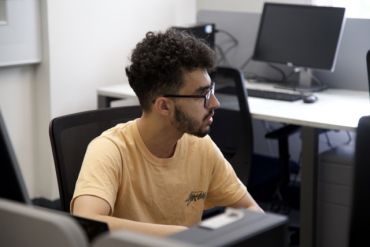 UNIQ+ 2023 intern Talal
UNIQ+ 2023 intern Talal
Talal: No, this is actually the first time. I think I visited Oxford when I was quite young on a year 9 or 10 trip, but this is the first time I've come to Oxford by myself and explored the city.
Kamil: I was born and raised in Northampton, so not far from here. I did the undergraduate UNIQ programme at Oxford before going to university and that's one of the reasons I applied for this because it seemed like that natural progression.
Could you tell us a bit about the research you've been doing over the last seven weeks?
Talal: The first week was training. The thing I really enjoyed was that it was structured in a way that if you wanted to do the more advanced topics, if you were comfortable with the easier topics, you could go ahead and do that. Then after that we pretty much got straight into the research.
Usually you have information and from that you produce data, but in our project we were given the data and we're essentially going backwards to produce the information. So for the bubonic plague that would be trying to find out what the contraction rate was for the plague, the average life expectancy, the mortality rate.
Kamil: The project was to understand the problems faced by people doing statistical inference for the first time, so we were kind of thrown in at the deep end and left to work it out for ourselves. So there was a lot of trial and error, and just trying things out. We got better at recognising what does work and going in the right direction. Now I see why a lot of the things we tried didn’t work!
Why computational biology? What was it about this study area that you were interested in?
Talal: I really wanted to get into something that had a machine learning aspect to it because I have a general interest in that. All the projects that I've done have really just been focused on pure computer science and mathematics and I thought that maybe delving into the biology aspect and looking at computer science in a different way would give me the skills to expand my palette. And I thought it'd be really interesting to see how computational biology actually works.
Kamil: It was similar for me as well. I’d not had any experience with computational biology and I didn't really even know what it meant when I applied for it. But at UCL I found that I liked to apply the maths that I learnt rather than just learn the maths, and so the project itself gave me a good opportunity to do that.
What’s been your highlight over the past seven weeks?
Kamil: I have liked the formal dinners. I think it's a normal College experience for a student here, but it's something different because at most universities in the UK they don't have this kind of thing. It's a lot more chilled than doing the project all the time - there are plenty of events for you to meet other interns and loads of opportunities to socialise.
Talal: Yes, I’d definitely say the same. The dinners, they really were spectacular. Going into the colleges and seeing the inner halls and the traditions of every college is quite remarkable. And you also get to meet everyone else from the programme as well as DPhil students and professors.
Has anything particularly surprised to you about UNIQ+ or about Oxford itself?
Kamil: There's a lot of support by the supervisors. They all clearly know their field very well. Some of the concepts are hard to grasp, which I expected, but it's definitely doable.
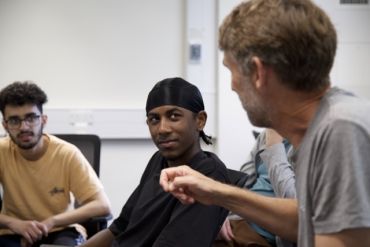 UNIQ+ supervisor David Gavaghan and interns Kamil and Talal
UNIQ+ supervisor David Gavaghan and interns Kamil and TalalTalal: I think I was just surprised about how big Oxford University actually is and it's really nice how it's incorporated within the city. You have access to so many libraries. However you’re feeling you can always find a different place to study, which I really like because I was used to just having one library to go and study.
What would you say to somebody who's thinking about applying for the programme and wondering if it's for them?
Kamil: If you've got a genuine interest in any of the projects you should apply. Even if you don't have much knowledge going into that project, still apply. Talal and I didn’t have knowledge of computational biology and we've done just fine. I’d also say that the application process was quite easy and concise.
Talal: The worst thing that can happen is that they'll say no, but if you ever feel like you shouldn't apply because you feel like your application’s not going to be strong enough, I would highly disagree with that. It’s open for everyone that has interest in research.
What your plans are for the future?
Talal: I'm doing a masters apprenticeship after this. I knew I wanted to do a masters but coming here and speaking to the DPhil students, I definitely want to think about doing a DPhil in the near future, after I've done my masters and maybe worked for a bit and saved up a bit of money.
Kamil: After graduating, I'm going to go to Microsoft as a software engineer. But I still want to keep the doors open for postgraduate study. UNIQ+ has convinced me that maybe I should take that route. I definitely wanted to apply for a masters, but the internship’s swayed my way more to a DPhil as well. But that's all in the future, I haven’t thought too much about it yet.
Find out more about UNIQ+ here.
When it comes to saving the world’s most trafficked wild species – Dalbergia, the rosewood tree- two things are absolutely essential.
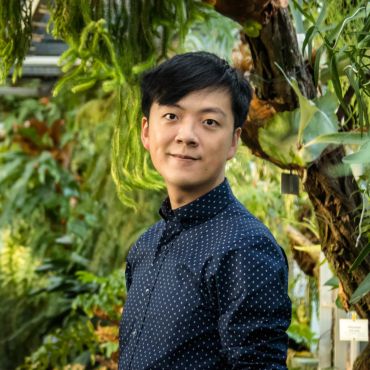 Dr Tin Hang (Henry) Hung. Credit: Henry Hung.
Dr Tin Hang (Henry) Hung. Credit: Henry Hung.You also need vision, because there are no simple ‘quick fix’ solutions. As Dr Tin Hang (Henry) Hung from the University of Oxford’s Department of Biology, says: ‘The rosewood trade is deeply complex, involving many different actors across multiple countries, including indigenous people who depend on selling forestry products to survive. Any attempt to restore rosewood populations therefore needs to be a collaborative approach that addresses the underlying issues fuelling this trade, particularly extreme poverty.’
Fortunately, the rosewood tree has a team of highly ambitious and driven champions. Over the past six years, University of Oxford researchers have supported a project that has brought together plant geneticists, forestry workers, conservationists, local communities, and indigenous people in the race to save the rosewood. By combining local knowledge, forestry management techniques, and cutting-edge plant genetics, these efforts have reduced the pressures on wild rosewood populations, whilst developing pioneering new tools to support conservationists. In combination, this work has provided, as Henry says; ‘a blueprint for how conservation should be done – using approaches that restore wild species while empowering local people through sustainable livelihoods.’
‘Nature has no borders’
This project has really demonstrated the power of the collaborative approach and the benefits of conservationists working with University of Oxford researchers. This will support the Department of Forestry to improve rosewood tree plantation, and also the Department of National Parks, Wildlife and Plant Conservation to make decisions on the best practices for rosewood conservation.
Dr Voradol Chamchumroon Head of Department at the Forest Herbarium, Department of National Park, Wildlife and Plant Conservation, Thailand
Henry’s fascination with rosewoods began as a DPhil student researching genetic diversity of Dalbergia populations. ‘I have always been fascinated about the connections between trees and people’ he says. ‘Trees are fundamental to our survival and restoring forests will be crucial for both mitigating climate change and conserving biodiversity. But many species have been overexploited to the point that they are now endangered. For instance, my home city Hong Kong is thought to be named after the fragrance tree Aquilaria sinensis, which was historically ubiquitous but now at risk of extinction.’
During his studies, Henry became deeply concerned about the speed at which rosewood forests were disappearing. In 2018, this motivated him to join a new rosewood conservation consortium set up by his DPhil supervisors Professor John MacKay and Dr David Boshier in partnership with the Alliance of Bioversity International and CIAT, the University of Copenhagen, and national research institutions from five countries in the Greater Mekong sub-region.* This had been launched with funding from The Darwin Initiative: a UK government grants scheme which aims to help protect biodiversity and the natural environment.
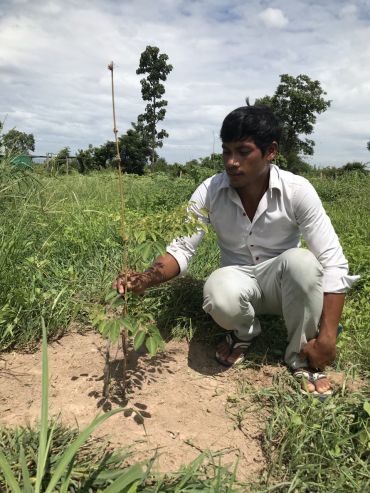 Cambodian farmer Mr Sok Em with rosewood seedlings established on his farmland. Credit: IRD, Cambodia.
Cambodian farmer Mr Sok Em with rosewood seedlings established on his farmland. Credit: IRD, Cambodia.Such an ambitious project would require all stakeholders to be engaged, if it was to have any chance of success. The project team set about creating a network of contacts within forestry offices, national park authorities, conservation organisations, local communities, and indigenous peoples in four countries across the rosewood’s native range: Cambodia, Laos, Thailand, and Vietnam. These were all brought together for stakeholder workshops (in-person to start with, but successfully transitioned online when the COVID-19 pandemic struck).
‘Rosewood species are severely threatened across all countries in their distribution range, so collaboration between countries is paramount to conserve their remaining diversity’ says Dr Riina Jalonen from the Alliance of Bioversity International and CIAT. ‘By bringing together all stakeholders, this enabled networking and the exchange of valuable information and experiences in rosewood conservation and management.’
‘When you have such a large number of different stakeholders, often with different interests, it can be difficult to coordinate effective actions’ adds Henry. ‘In these situations, academic institutions such as the University of Oxford can play an important role by acting as a “glue” to bring people together, build trust, and facilitate knowledge exchange.’
Solving two problems with one action
The pressure on these rosewood species is immense, from illegal logging, habitat destruction and climate change, and it is no longer likely their populations can recover in their natural habitats without interventions. This study is an important step towards recovery of two of the world's most trafficked species and provides a model for the conservation of other endangered tropical tree species too.
Dr Ida Hartvig, Biologist, University of Copenhagen
Through engaging this wide network, it became clear that there was an opportunity to address local needs alongside conservation goals. In many of the regions where rosewood is naturally found, particularly mountainous areas unsuitable for agriculture, poverty levels can be high. However, the team knew from a previous small-scale project that local people could be supported to collect rosewood seeds and grow seedlings as a source of secondary income. This created a way to achieve two goals at once: generating local sources of rosewood seedlings for conservation, whilst providing sustainable livelihoods.
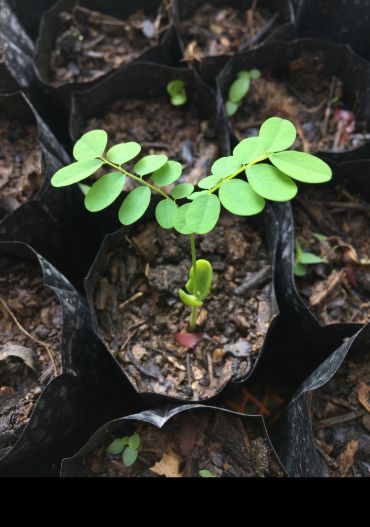 A Dalbergia oliveri seedling. Credit: Shutterstock.
A Dalbergia oliveri seedling. Credit: Shutterstock.Because financial empowerment is inextricably linked with gender equity, a key goal for the project was to improve gender representation within the forestry trade. ‘Traditionally, the forestry trade is very male-dominated as this can involve travelling to remote locations, climbing trees, and being exposed to dangerous animals’ says Henry. ‘Rosewood farms offer women a more accessible means to benefit from this industry.’ Consequently, the project team ensured that at least a third of the indigenous people trained in each country were women.
Within just three years, and despite the challenges created by the COVID-19 pandemic, this approach had already had a significant impact on boosting local incomes. In Cambodia, for instance, communities supported by the project saw average income from selling rosewood seedlings almost double from $300 to $569 a year. For one of the largest nurseries, in the Pursat region of Cambodia, improved methods led to an almost doubled production, from 40,000 to 90,000 rosewood seedlings annually. Besides reducing the pressure on wild rosewood populations, these nurseries also provide a local source of seedlings for reforesting projects.
You can learn more about the threats facing rosewoods and the project to save them in this video produced by Alliance of Bioversity International and CIAT.
Breaking a genetic bottleneck
The project is a rare example of the value of close collaboration between government staff, practitioners and conservationists working on the ground and geneticists. Engagement of local staff and field researchers enabled collection of DNA samples from remnant populations, the University of Oxford researchers performed the genetic analyses and made the results available including as a web-based tool useful in the next generation of hands-on conservation efforts for these precious species.
Dr Ida Theilade, Plant Geneticist, University of Copenhagen
Simply planting more trees, however, won’t be enough to secure the rosewood’s future. With wild populations having been so decimated, low genetic diversity can be a major concern as this reduces seed production, seedling survival, and growth. Furthermore, the effects of climate change mean that trees planted today may not be suited to conditions in the near future. This meant that a key priority for the project was to map the remaining genetic diversity to identify “genetic hotspots” to prioritise for conservation.
Through the network of partners, the project sourced over 800 samples of rosewood leaves from across Southeast Asia which were then sent to Henry in Oxford for DNA sequencing. These included new collections gathered by the partners over the past few years, and also archival collections from Dr Ida Hartvig at the University of Copenhagen from the last decade. ‘It was very sobering to realise that for some of the samples, the original populations in the field had already disappeared, and I was now handling the last remnants of their genetic material’ says Henry.
The first step involved producing the first-ever reference genome for Dalbergia cochinchinensis and Dalbergia oliveri. These were used as baselines for measuring genetic variation among the samples. The genetic data was then combined with geographic information to generate comprehensive distribution maps of rosewood genomic diversity. ‘Notably, this revealed that coastal regions have especially high levels of local adaptation, making them a conservation priority’ says Henry. ‘This may possibly be due to their exposure to more variable environmental conditions on the coast, and their distance from core inland populations may also have allowed them to evolve new genetic diversity at the frontier of the species’ range.’ Using these insights, the project team established 23 new conservation units, creating new jobs for local people as forestry and conservation officers.
Today’s seeds for tomorrow’s forests
If we want the impacts of this work to be self-sustaining, we have to empower conservationists, policy makers and local people to use genetic data as a tool to aid conservation decisions. So right from the start, we were committed to developing user-friendly and open-access online tools to support decision making.
Dr Tin Hang (Henry) Hung, Lead Author & Project Co-Lead, University of Oxford
Building on this, Henry applied this “treasure trove” of genetic data to investigate which genes were intricately linked with environmental adaptation. This identified genetic variants that were strongly associated with environmental variables, such as average rainfall levels and temperature variation. These findings enabled the team to project the "genetic offset" for different rosewood populations, to understand the mismatch between present genetic adaptability and anticipated climate scenarios up to 2100 (recently published in the journal PNAS).
‘Because the effects of climate change are happening so quickly, local rosewood populations will not have time to evolve and adapt by natural selection’ explains Henry. ‘This means that assisted migration will become an increasing focus within conservation, where populations are intentionally established beyond their historic range to track areas with suitable habitat through a period of change.’
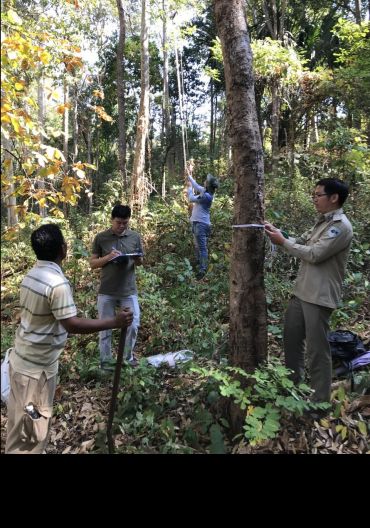 Workers from the Institute of Forestry and Wildlife Research and Development in Cambodia map and measure Dalbergia oliveri seed-producing trees. Credit: IRD, Cambodia.
Workers from the Institute of Forestry and Wildlife Research and Development in Cambodia map and measure Dalbergia oliveri seed-producing trees. Credit: IRD, Cambodia.Alongside this, the genetic database was developed into a bespoke online application called seedeR: a seed-selection tool for rosewood farmers, conservationists, and forestry workers. ‘It is a very user-friendly tool. You simply input the latitude and longitude of a location and it will calculate the most suitable seed source based on the predicted conditions in fifty years’ time’ says Henry.
‘All too often, genomic technologies are inaccessible to conservationists due to a lack of genomics expertise, state-of-the-art technologies, and resources’ he adds. ‘But we have demonstrated that through connecting people and focusing on the needs of end-users, genomic technologies can directly support rapid decision-making and conservation activities.’
With the seedeR interface requiring no specialist knowledge, conservationists are not the only ones who will benefit, as plant geneticist Dr Ida Theilade (University of Copenhagen) explains: ‘To many low-income households, farming rosewood trees acts as a security in times of financial crises and shocks, including for female headed households. As a publicly accessible tool, seedeR will help farmers select seed sources matching planting sites and thereby secure better income from family-based tree-planting activities.’
Hope for the future
This project has highlighted natural adaptations in rosewood trees, and specifically matched genetic diversity to environmental conditions. Genomics research has improved our understanding and given us a toolkit to effectively conserve adaptation potential in remaining trees under a changing climate.
Professor John MacKay, Senior Author & Project Co-Lead, University of Oxford
With new funding from a National Geographic Society grant, Henry intends to confirm the gene-environment associations by growing seedlings under controlled conditions, and identifying which genes are expressed differently in response to environmental stresses. ‘Ultimately, we hope to develop genetic markers so that varieties with key desirable traits, such as drought tolerance, can be identified with a simple genetic screen rather than having to grow them in the field, which takes many years. This would massively accelerate conservation efforts, by reducing the time needed to identify optimum varieties’ he says.
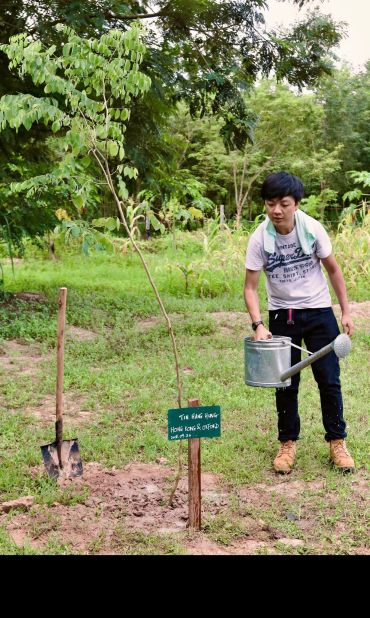 Henry planting a Siamese rosewood tree (Dalbergia cochinchinensis) in Cambodia, September 2018, to commemorate the launch of the project. Credit: Henry Hung and David Boshier.
Henry planting a Siamese rosewood tree (Dalbergia cochinchinensis) in Cambodia, September 2018, to commemorate the launch of the project. Credit: Henry Hung and David Boshier.‘I, for one, am really grateful to my DPhil supervisors John and David, all my collaborators, and all the people living on the land of Mekong who have inspired my research today’ he adds. ‘Forests in southeast Asia nurtured me to become a forest scientist, and I still want to be one for many decades to come. Hopefully some day in my career, I will see rosewoods delisted from the IUCN Red List.’
The study ‘Range-wide differential adaptation and genomic offset in critically endangered Asian rosewoods’ has been published in the journal PNAS.
*The project ‘Conserving Rosewood genetic diversity for resilient lives in the Mekong’ was led by the University of Oxford in partnership with the following organisations: the Alliance of Bioversity International and CIAT; the University of Copenhagen; the Institute of Forest and Wildlife Research and Development of Cambodia; the National Agriculture and Forestry Research Institute of Lao PDR; the Vietnamese Academy of Agricultural Sciences; the Department of National Parks Wildlife and Plant Conservation of Thailand; the Chinese Academy of Forestry.
The Oxford Simulation, Teaching and Research team (OxSTaR) team have been pioneering the use of simulation-based education (SBE) at Oxford University for over 15 years. Part of the Nuffield Department of Clinical Neurosciences, they have grown from two to fourteen members, and the extended team now numbers over 50 from a diverse range of backgrounds. Based at the John Radcliffe Hospital, the OxSTaR Centre provides a psychologically safe learning environment for medical students and multidisciplinary healthcare professionals.
OxSTaR's work has been recognised by an AdvanceHE Collaborative Award for Teaching Excellence (CATE), which celebrates outstanding collaborative impact on teaching and learning and highlights the key role of teamwork in higher education. Meet some of the members of Oxford's OXSTaR team below and find out more about their work here.
Helen Higham, OxSTaR Director
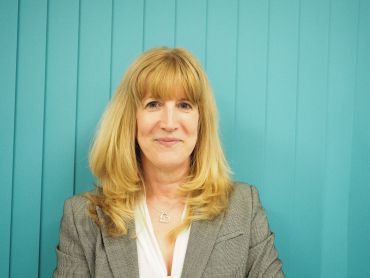 Helen Higham, OxSTaR Director
Helen Higham, OxSTaR Director
‘I believe our success as a team has come about because of our common sense of purpose, mutual support, and joy at work – there is a lot of laughter in OxSTaR. It was this team ethos that enabled us to step up to the immense challenges of the pandemic and successfully negotiate those extraordinary times together. We continued teaching and delivered freely accessible educational materials to healthcare students and workers globally to disseminate new skills vital to staff and patient safety during COVID-19.
Our aim now is to build on the successes of the past 15 years, continue to expand our work using novel learning technologies and drive the research in clinical education and patient safety. I could not be more proud to work with this wonderful team and I’m very much looking forward to what’s coming next.’
Rosie Warren, OxSTaR Manager
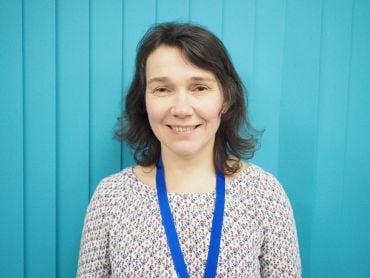 Rosie Warren, OxSTaR Manager
Rosie Warren, OxSTaR Manager
‘I started in OxSTaR as a simulation fellow in 2012 and haven’t left! I’ve worked in many teams both in the NHS and the military, and this team is special because we have a cohesiveness and appreciation of each other’s strengths and capabilities which means we always get a bigger and better result than might otherwise be expected.’
Wendy Washbourn, OxSTaR Administrator
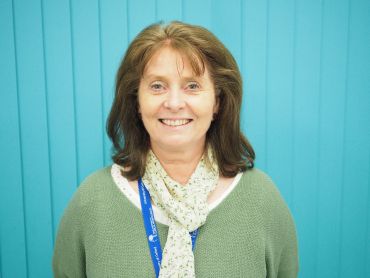 Wendy Washbourn, OxSTaR Administrator
Wendy Washbourn, OxSTaR Administrator
‘When I first started in the team I was mainly involved in welcoming people on our courses and sending out certificates, but Helen and Rosie encouraged me to get involved in more of what we do, and I’m now helping to run a leadership programme in the hospital and running international meetings. It’s such an exciting role and I’ve been really surprised by what I’m capable of.’
Alan Inglis, Head Technician
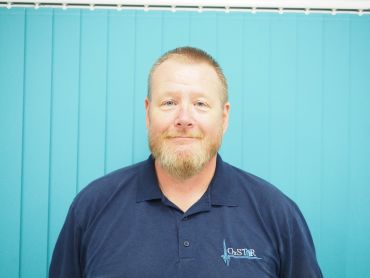 Alan Inglis, Head Technician
Alan Inglis, Head Technician
‘I think most of what the tech team does in a simulation centre is hidden, and actually it’s a mark of our success when teaching runs smoothly, either in person or online, and our students don’t notice we’re there. When I began this role simulation was relatively new in healthcare and I’ve seen enormous changes in what we can offer in terms of simulating real experiences for students and healthcare professionals, and making a real difference to practice and patient care. The thing that stands out about our team is collaborative approach to what we do – everyone’s expertise and viewpoint is respected, and that makes an enormous difference to the quality of our teaching.’
Hilary Edgcombe, Head of the Global Anaesthesia Team
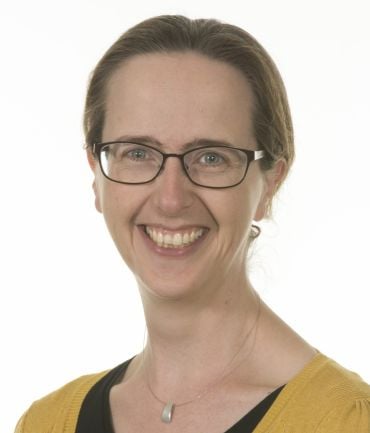 Hilary Edgcombe, Head of the Global Anaesthesia Team
Hilary Edgcombe, Head of the Global Anaesthesia Team 'I think the team in OxSTaR is unique because of the pervasive atmosphere of encouragement to develop ideas from all team members and the pro-active mentoring and supporting of others with burgeoning interests inside and outside the team. The global reach the team has achieved is in large part because it is “business as usual” to share perspectives on new ideas and projects in progress. Support within and outside the core team enables us to go above and beyond in commitment to our goals and cross-disciplinary and cross-cultural perspectives enhance our reach and impact by ensuring feasible and context-relevant approaches.'
Laura Vincent, Head of Intensive Care Simulation and Human Factors
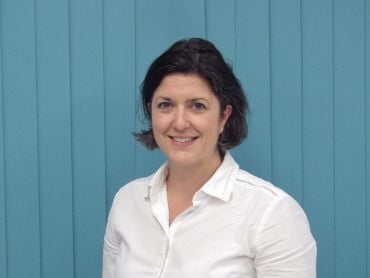 Laura Vincent, Head of Intensive Care Simulation and Human Factors
Laura Vincent, Head of Intensive Care Simulation and Human Factors
Laura sits across both the Clinical Governance and Education teams in critical care, and through her OxSTaR role delivers human factors and patient safety training across specialties and professional groups throughout Oxford University Hospitals.
‘I’m absolutely passionate about high quality education that has a meaningful impact on quality of care, patient safety, staff confidence and staff wellbeing – simulation-based education ticks all these boxes, and never more obviously than during the pandemic. OxSTaR is like an extended family, that I am so proud and thankful to be part of – a high functioning, close-knit and constant team of pluripotent individuals. They have supported me throughout my development as a human factors and simulation specialist and continue to allow me to develop my education career both academically and practically as a Consultant in Intensive Care. When clinical work is challenging, a day spent with the OxSTaR team is rejuvenating and inspiring. I am excited about the endless opportunities ahead for OxSTaR as we develop both our teaching and research capacity.’
Sally Shiels, Head of Virtual Reality Simulation
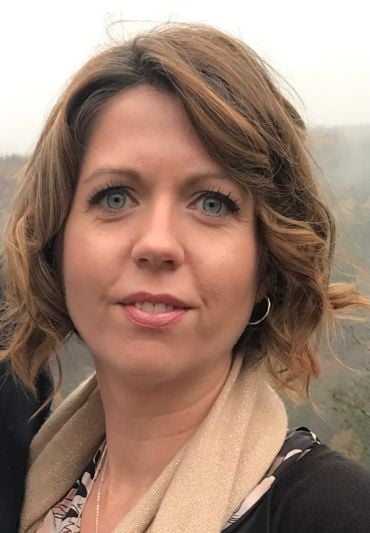 Sally Shiels, Head of Virtual Reality Simulation
Sally Shiels, Head of Virtual Reality Simulation
‘I feel I’ve evolved enormously as an educator through my time working in OxSTaR. In part because the team ethos is so collaborative and supportive, but also because I’ve been given the freedom to drive the projects in virtual reality and appreciative inquiry independently. I’ve been able to build a team that is doing extremely exciting work in this area for the benefit of students and staff in healthcare, and, most importantly, our patients.’
‘Dragons Den’? More than 80 social science researchers deliver ‘amazing’ ideas
Four ‘exciting’ projects chosen to be turned into short films
Seven months ago, Social Sciences Division put out a call to its academics: would you like to make a short film based on your research, in collaboration with BBC Ideas? Who wouldn’t?
Six weeks later, not surprisingly, some 80 amazing ideas for filming were delivered, covering the full range of the division’s research. And somehow the BBC and the division had to whittle those down to just four ideas, which could be distilled into five-minute films or animations, explaining the research and being entertaining for an under 35s audience.
 BBC Ideas
BBC IdeasShe explained how BBC Ideas works, ‘These are short films aimed at an under 35s audience…they need academic rigour, insight and facts but also need to be effortlessly entertaining.’
 Oxford Social Science Division
Oxford Social Science Division
‘We hope that these short films and animations will inspire watchers to explore new ideas and perspectives, and find out more about Oxford’s excellent academic research in the social sciences and beyond.’
The four projects chosen were:
Why do some children beat the odds? a captivating film based on the Young Lives project’s idea about how children in some of the poorest countries on Earth have beaten the odds to improve their lives.
How the humble bean can help the world, a clever, entertaining animation based on an idea from TABLE, the future of food platform, about how the humble bean is the answer to everything…and not.
Five things you probably didn’t know about periods, an amazing and incredibly interesting film, led by doctoral candidate Gabriella Kountourides based on her research on menstruation.
How to keep cool (without heating the planet). As the world warms and heatwaves become more frequent, we turn up the Air Conditioning. But that contributes to climate change. This fascinating animation looks at the air-con conundrum.
Bethan explained, ‘Turning what are quite intellectually demanding concepts into five minutes of film, that a wide audience will enjoy, is often a challenge.’
But she added, ‘It was great to work with a new partner, and exciting to be working on social science topics.
‘These films showcase the variety of connections to the real world in social sciences.
‘It’s been privilege to work with the academics and to discover new ideas and fresh perspectives.’
BBC Ideas was launched in 2018 and has published over 750 short films. They are available on numerous channels, from the BBC Ideas website (bbc.co.uk) as well as YouTube and Twitter. Films are promoted on the BBC News website and Homepage, as well as the main BBC Facebook, Instagram and Tik Tok accounts.
One of the most popular BBC Ideas films on YouTube is about being an introvert in an extrovert world, and has had over 5.7 million views. Another very popular film on YouTube is about the man who invented algorithms – with over two million views.
Bethan concluded, ‘We are really pleased with the final films. The animators and production companies we’ve worked with have done a brilliant job, they are so creative and brilliant. We’re really excited to share them with the audience.’
The Films
Why do some children beat the odds?
Young Lives has followed the fortunes of some 12,000 children in four developing nations for the last 20+ years. And the team behind the long-running survey knew they had an idea which would relate to many young people: beating the odds.
The BBC matched the idea with the poet Lemn Sissay, who told his compelling personal story of triumph over adversity – based around three factors identified in Young Lives’ research. Young Lives has looked at how the young people it has followed overcome crises and difficult lives – more information can be seen on the website here.
Julia Tilford, Communications Manager, said, ‘We were thrilled to have the opportunity to bring this positive story to young audiences – particularly when there are so many crises in the world.’
Dr Cath Porter, the project’s Director, added, ‘We were very excited to be chosen and to work with BBC Ideas and Lemn Sissay, whose own inspiring story brings our research to life.’
How the humble bean can help the world
TABLE works with food system stakeholders to explore the future of food, and the ways in which scientific evidence and social values inform often conflicting visions and arguments for necessary change. So, the idea of making a film about the humble bean, and whether it is the answer to everything, was very much in the team’s wheelhouse.
Jackie Turner, who worked closely with the BBC on the film, said, ‘We pitched a few ideas, but in the end, beans turned out to be a great topic choice because they join up so many different strands of conversation in food systems - they're in the middle of so many different proposed solutions.’
Tamsin Blaxter, member of the TABLE team, said, 'Our usual audiences are people working in food production or on food policy, but the reality is that everyone is a stakeholder in the food system. Everyone can exert some power through what they choose to eat, how they choose to vote, and what they choose to support - and everyone stands to benefit from healthier and more sustainable food.'
TABLE director Dr Tara Garnett explained, ‘It was something of a joke: beans are the answer to everything. It was flippant but not really. Beans are great – they’re good for health and the environment. We will all be eating beans for dinner after this.’
But she added seriously, ‘Nothing can ever be the answer to everything and that’s a really important message about the food system.’
The TABLE team members emphasised how pleased they all are with the film and the potential for reaching a wide audience.
Five things you probably didn’t know about periods
Rarely discussed but experienced by about 50% of the world’s population, menstruation is fascinating to Anthropology doctoral student Gabriella Kountourides.
Her film busts five myths about periods – including the idea that periods are somehow linked to lunar cycles (they’re not) and that women’s periods synchronize if they live together (they don’t) Gabriella also explores old myths – such as the Ancient Greek idea that wombs float around the body (obviously they do not).
In what is likely to be a very popular film, the irrepressible Gabriella concluded, ‘There’s so much unknown about something that happens to half of the world’s population at some point in their life.’
As temperatures go up, the cost of power should go down...right? Wrong. Potentially, the cost of cooling - and the emissions created - will add to global warming, in an ever expanding feedback loop. In this powerful short film, based on the research of Dr Radhika Khosla and the Oxford Martin School Programme on the Future of Cooling, the problems of keeping cool are explained. The research team said, 'The BBC Ideas team worked closely with us on the script and animation to make sure it was as true to the research as possible while also being easy to understand.
'Our hope is that it informs a new audience about sustainable cooling and sparks their curiosity. Above all, we want people to know that while the challenges presented by climate change are enormous, there are some solutions we can start implementing right away.'
The AC might be effective at cooling the room, but they are power hungry appliances. A small unit in a single room uses more electricity than four fridges.
We might want to firmly forget the COVID-19 pandemic, but it is almost inevitable that the future will see new disease outbreaks. How successfully we meet these will depend on whether we can learn from the impacts the coronavirus had, at the health, political, economic, and social level. Countries around the world adopted markedly different approaches to tackling the pandemic – but which were the most effective? And how did this depend on each country’s unique combination of demographics, political institutions, social structures, and health systems?
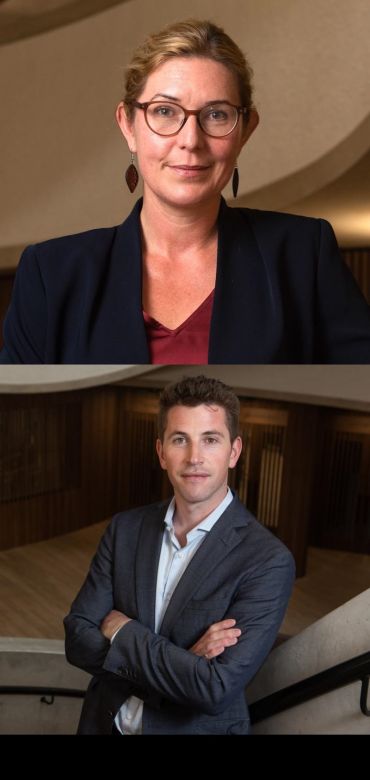 Associate Professor Anna Petherick (top) and Professor Thomas Hale (bottom).
Associate Professor Anna Petherick (top) and Professor Thomas Hale (bottom).The measures are coded according to their theme – for instance, workplace closures or controls on international travel – but they can also be combined into an aggregate score that gives an overall measure of the strictness of each nation’s response to the pandemic. The resource also includes an archive with the original source materials for each policy.
‘Whilst the Tracker itself does not aim to measure the appropriateness or effectiveness of a country’s reaction, it offers a way to compare responses and learn from one another’ said project PI Thomas Hale, Professor of Public Policy at the Blavatnik School of Government. ‘This granular approach, which allows us to look at measures in aggregate, gives a sense of how “open” or “closed” nations became, which is more helpful than generic labels like “lockdown”, whose meaning can vary across different contexts.’
Covering 187 countries and over 200 subnational jurisdictions, the database is astonishingly comprehensive, with just under 9 million data points. But the story behind it is just as remarkable. As project co-lead Anna Petherick, Associate Professor in Public Policy at the Blavatnik School of Government, said, ‘What started as just a small team of us entering data into spreadsheets rapidly snowballed into a global effort that quickly became a “go-to” source of information for world leaders, policy makers, and the media.’
Incredibly, the dataset was compiled almost entirely by volunteers; a diverse, international community of over 1500 people, from undergraduate students to software developers. During the height of the pandemic, their combined efforts influenced high-level policy papers, featured in global media coverage, and ultimately informed the decisions that governments, international organisations, and public health agencies took on their COVID-19 strategies.
But as Anna explained, it all began with a Blavatnik School class back in March 2020.
An introduction to the Oxford COVID-19 Government Response Tracker
The germ of an idea
‘Those weeks leading up to the first lockdown were filled with so much uncertainty, and all of us – staff and students – were finding it difficult to focus on anything. It was clear that COVID-19 was developing into a situation of unprecedented scale, but just how big the pandemic would become and how long it would last were completely unknown’, Anna said. Whilst teaching a class as part of the Blavatnik School’s Master of Public Policy course, the team realized that the cohort of students in the room represented around 50 different countries. ‘Very pragmatically, we already had a diverse community capable of reading a large proportion of the official updates released by governments across the world.’ This gave Thomas the idea for a global COVID-19 policy tracker, and he asked for my help to get it off the ground.’ The proposal was that the tracker would record policy changes continuously to provide the most up-to-date comparative tool possible.
The impact of the COVID-19 Government Response Tracker has been nothing short of extraordinary. It has been used by governments all around the world, the UN, the WHO, and hundreds of news articles in dozens of different languages. That really is quite an extraordinary impact in such a short period of time, and none of that would have been possible without the extraordinary contributions of the volunteers.
Professor Irene Tracey, Vice-Chancellor of the University of Oxford
Thomas and Anna launched the Tracker on 22 March 2020, the day before the UK first went into lockdown. Around 30 students from the Blavatnik School and other parts of the University immediately volunteered to track policy updates, enter and code the data, and act as reviewers. Their contribution was invaluable since these tasks were not possible to automate, due to the data collection relying on a wide variety of publicly-available information sources, from government statements and news reports to social media accounts. The team initially recorded information on 11 different areas, including school closures, public events cancellations, and public information campaigns, besides monetary measures and emergency investment in healthcare. (This ultimately expanded to 23 indicators, including vaccine policies).
‘At the time, there was a lot of anxiety among our students about what would happen to their exams, so the Tracker gave them something to focus their minds on, and a sense of agency that they were contributing something towards softening and eventually overcoming the pandemic’, said Anna.
A simulation of data from the Oxford COVID-19 Government Response Tracker, produced by Our World in Data. This is an example of the variation in governments’ responses to COVID-19 across the world on Friday 30 April 2021. Credit: Our World in Data.
Scaling up
Despite the students’ enthusiasm, the sheer volume of data flowing in meant the project quickly required more people power. ‘The first few months were exhausting, and I was working late into the evening most days and weekends too’, said Anna. ‘We felt an enormous sense of responsibility, and a sense that we had to get this right to meet people’s needs.’
One key challenge was designing a framework that could capture and compare all the different kinds of policies governments were adopting. While many governments did similar things, nuance and context were very important, creating difficult choices and trade-offs for the team. ‘Since day one we have been building the airplane as we fly it,’ Thomas said.
Another major hurdle was developing a database that could handle complex data and adapt over time, whilst remaining easy for volunteers from around the world to use. Fortunately, Thomas’s partner Dr Sam Webster, a financial risk manager with experience in handling large data sets, was able to build the basic system in one marathon weekend.
But the biggest need was getting a critical mass of volunteers from around the world. Reaching out to Oxford University’s alumni community, they received an ‘overwhelming response’, with many signing up to volunteer and help raise awareness of the project.
‘Suddenly word was getting out here, there, and everywhere’, said Anna. ‘As one example, a medical student at The Federal University of Pará in Belém, Brazil, heard about it somehow and recruited, at that stage, a large proportion of our entire Brazil sub-national team.’ Even major corporations lent their support. On hearing that the Tracker was built using their software, Microsoft encouraged their staff to volunteer, which led to a sudden surge in sign-ups.
 Andrew Read
Andrew Read He said:
‘I saw it as an opportunity to do something practical to help even though restricted to working from home. I also found it fascinating to learn how other countries were reacting to COVID-19. I researched and reported on various countries across Europe and Africa, and it was an interesting challenge to track down suitable sources of information, and one I definitely got better at over time.’
Though launched with a budget of zero, the project came to attract financial backing, including newly-launched grants for COVID-19 response projects. ‘This gave us the resource to scale up massively and invest in more support for our volunteers’, said Anna. ‘We hired several research assistants who helped us to develop training modules, run the weekly online check-in meetings, and monitor the vast number of emails and questions.’
These actions enable the volunteer base to swell even further, stretching across the globe. Many saw it as a way to help fight back against COVID-19 at a time when so many of their usual activities were disrupted.
Some of the 1500 volunteers who powered the Blavatnik School’s COVID-19 Response Tracker talk about their experiences creating the most-cited dataset of pandemic policy decisions in the world.
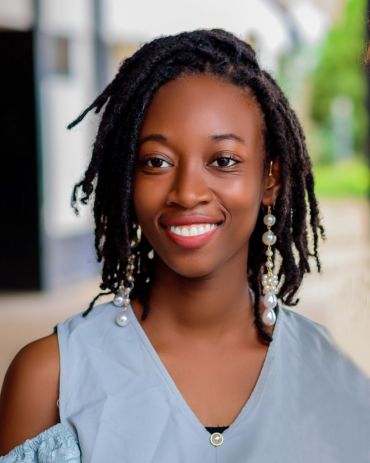 Precious Olajide
Precious Olajide‘I volunteered for the COVID-19 Government Response Tracker project because I saw it as an opportunity to be involved with something bigger than myself, and to contribute to a project that had a global influence. The community of volunteers was like another family for me; we were interacting all the time with emails and WhatsApp. It was my first involvement in a research project and because the organising team were so supportive, I enjoyed it a lot.’
A global influence
Despite the enormous scale of the dataset, from the beginning it was designed to be accessible and easy for anyone to understand. The entire dataset was made available as an open-access GitHub repository, so that, as Anna said: ‘anyone could download and use the data, whether they were a journalists, policy makers, or even school pupils and teachers.’ Because of this, the dataset soon gained international attention from governments, researchers, journalists, and NGOs around the world.
‘One day in about late March 2020 I made some very basic bar charts comparing the policies of countries according to their income level’, Anna recalled. ‘Suddenly I learnt that they had been sent to the UN Secretary General. Something I had very quickly created on my laptop at home was now being used by policy makers at the highest level.’
Over the next two years, the dataset became a critical tool for decision-makers and provided real-time data for dashboards maintained by the UN, WHO, World Bank and many individual governments and businesses. Our World in Data, for instance, used the Tracker’s data to publish visualizations across several different policy areas.
‘By tracking and comparing policy responses, the Tracker made it possible to study which measures were effective and which ones were not’, said Max Roser, Founder and Director of Our World in Data. ‘This information was crucial for decision-makers who needed to make informed choices about how to respond to the pandemic. No one else was systematically collecting this type of data, so the hundreds of volunteers and the staff who made this possible were doing truly important work.’
The core team were soon regularly engaged in advising governments and international organisations, including the UN Office for the Coordination of Humanitarian Affairs, the World Health Organization, and the UK Cabinet Office, Department of Health and Social Care, and Prime Minister’s office.
A simulation of data from the Oxford COVID-19 Government Response Tracker, produced by Our World in Data. This shows how a ‘stringency score’ of COVID-19 measures varied over the course of the pandemic for six countries. Credit: Our World In Data.
‘After being approached by the Cabinet Office’s International Comparator Joint Unit, we provided fortnightly updates for the Government and Prime Minister on trends and patterns and ad hoc “deep dive” data reports on specific topics, for example education policies’, said Thomas.
The COVID-19 Government Response Tracker has been an invaluable tool that helped researchers, the public, and political institutions around the world to understand and respond to the global pandemic. At Our World in Data, we are all very grateful that this data was collected and that we were able to make it accessible and understandable in real-time to those who were trying to track government responses around the world.
Max Roser, Founder and Director of Our World in Data
In research, meanwhile, the team published a series of articles in leading journals including Nature Human Behaviour and The Lancet Public Health. Soon, the Tracker became the most-cited dataset of COVID-19 policy decisions in the world, with over three thousand academic citations recorded on Google Scholar to date. At peak periods, the core dataset was being downloaded several thousand times a week.
The Tracker also attracted enormous public interest, being featured in articles published in The New York Times, the Washington Post, Financial Times, National Geographic, BBC News, Al Jazeera, Le Monde, and The Economist, besides others.
But as Anna said, perhaps the most important impact was that the dataset was used directly by governments, international organisations, and public health agencies to decide how to respond to the ever-changing COVID-19 situation.
‘It changed the conversation at a time when certain leaders were questioning the value of science and of bureaucracies. Instead of endless back-and-forth arguments about what each government was or wasn’t doing (because we gave the world the data on that!), the dataset helped to push the discussion towards what was actually working or not.’
A new chapter
I feel very proud to have been involved with the project. Similar to the 1918 Spanish flu pandemic, the impacts of the COVID-19 pandemic will be studied for many years to come, and this dataset will provide researchers with an immeasurably useful resource.
Andrew Read, COVID-19 Tracker volunteer
Thankfully, the peak of the pandemic passed and by the end of 2022, most countries had settled into their version of “the new normal.” With few new COVID-19 policies being released, the team made the decision to stop publishing real-time updates on the Tracker. But as Anna said, this does not mean that the project has come to an end.
‘Our work is changing in type, rather than ending. We will continue to analyse the dataset to better understand the different ways that governments prepare for and respond to pandemics, as well as the effects of COVID-19 policies on behaviour, health, the economy, and other outcomes. The data from the Tracker also has an important role to play in improving our preparedness for future outbreaks, and we are working closely with colleagues across the recently launched Oxford Pandemic Sciences Institute.’
 Shoaib Khan
Shoaib KhanThomas added, ‘Perhaps the most important lesson for me has been the extraordinary power of a group of volunteers, united by a common purpose to contribute to something bigger than themselves, to do something truly extraordinary. The whole world owes them a deep debt of gratitude.’
The Oxford COVID-19 Government Response Tracker team also wishes to thank the project’s major funders: The Blavatnik Family Foundation, Roche, ESRC, the New Venture Fund, PAX Sapiens, and Microsoft.
Key publications:
‘A global panel database of pandemic policies (Oxford COVID-19 Government Response Tracker)’, Nature, March 2021.
‘What have we learned from tracking every government policy on COVID-19 for the past two years?’, Blavatnik School of Government Working Paper Series, March 2022.
‘Variation in government responses to COVID-19’, Blavatnik School of Government Working Paper Series, July 2022.
‘What would a data framework for policy responses to pandemic diseases look like?’, Blavatnik School of Government Working Paper Series, February 2023.
- ‹ previous
- 4 of 247
- next ›
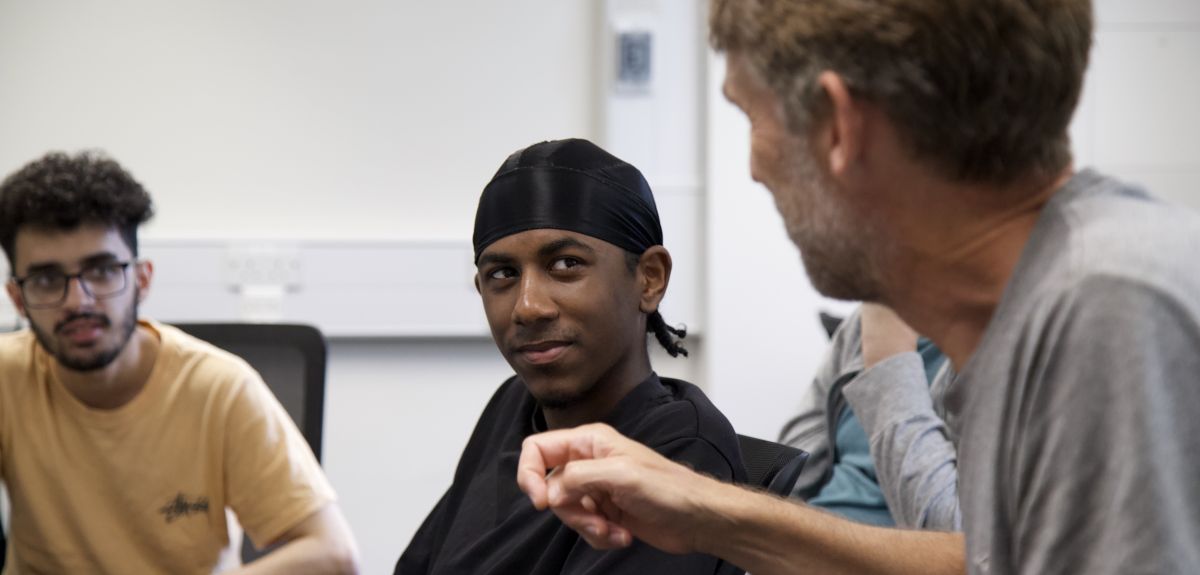
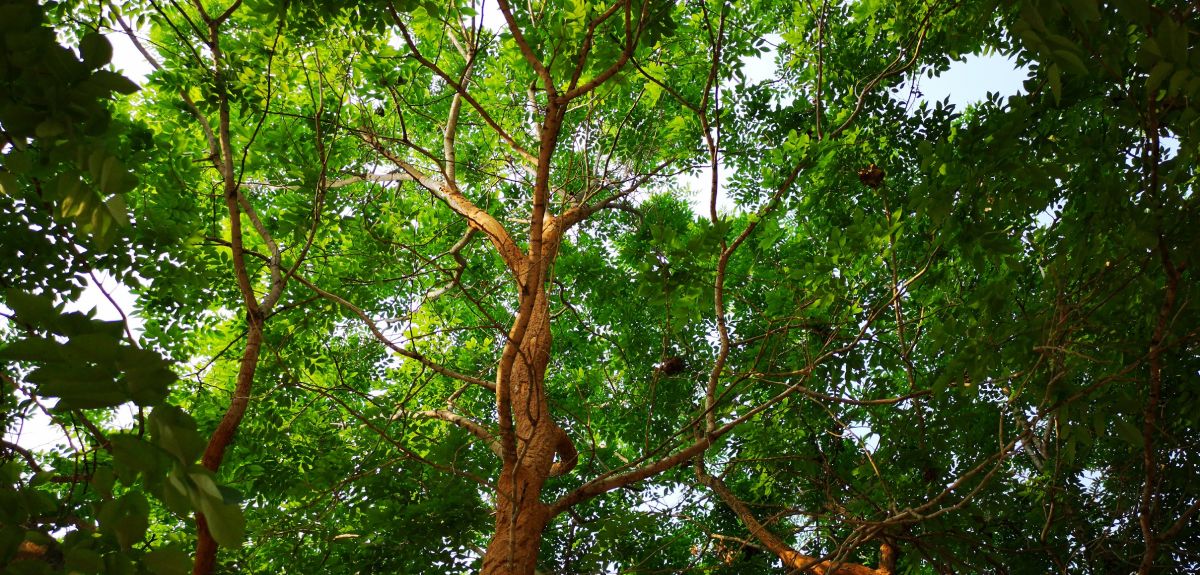
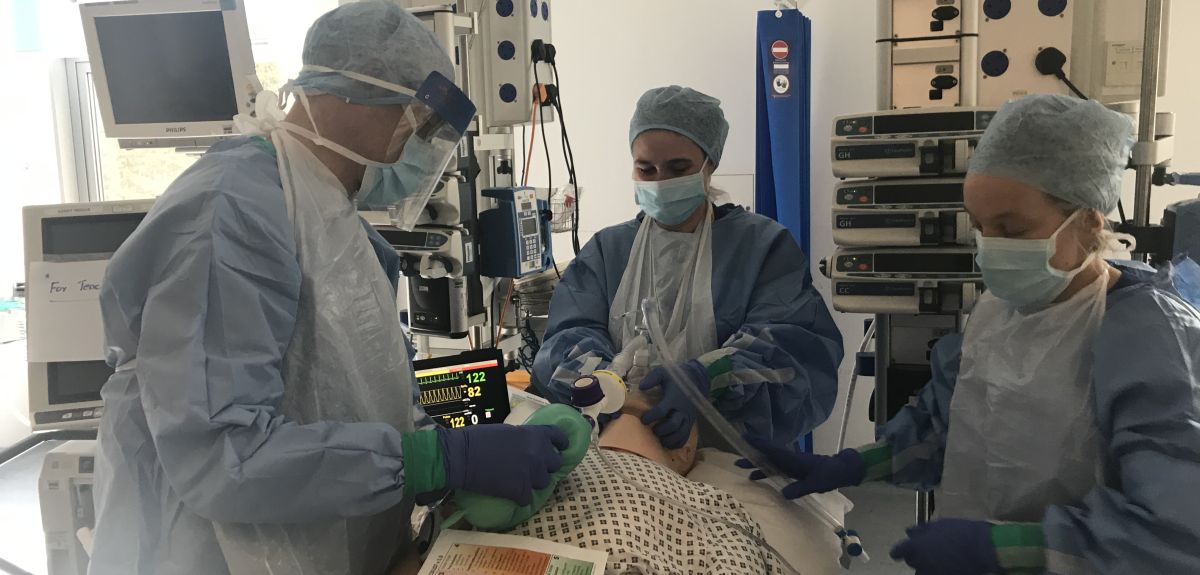
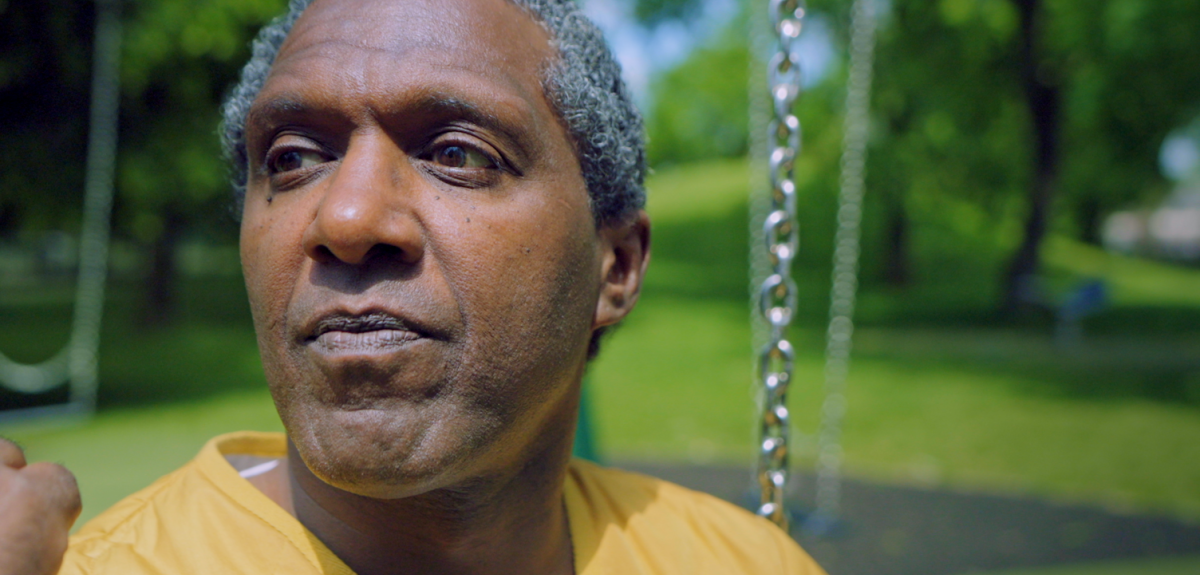

 From health policies to clinical practice, research on mental and brain health influences many areas of public life
From health policies to clinical practice, research on mental and brain health influences many areas of public life From research to action: How the Young Lives project is helping to protect girls from child marriage
From research to action: How the Young Lives project is helping to protect girls from child marriage  Can we truly align AI with human values? - Q&A with Brian Christian
Can we truly align AI with human values? - Q&A with Brian Christian  Entering the quantum era
Entering the quantum era Can AI be a force for inclusion?
Can AI be a force for inclusion? AI, automation in the home and its impact on women
AI, automation in the home and its impact on women Inside an Oxford tutorial at the Museum of Natural History
Inside an Oxford tutorial at the Museum of Natural History  Oxford spinout Brainomix is revolutionising stroke care through AI
Oxford spinout Brainomix is revolutionising stroke care through AI Oxford’s first Astrophoria Foundation Year students share their experiences
Oxford’s first Astrophoria Foundation Year students share their experiences DPhil student, Frankco Harris, reflects on his unique journey to Oxford and future plans
DPhil student, Frankco Harris, reflects on his unique journey to Oxford and future plans